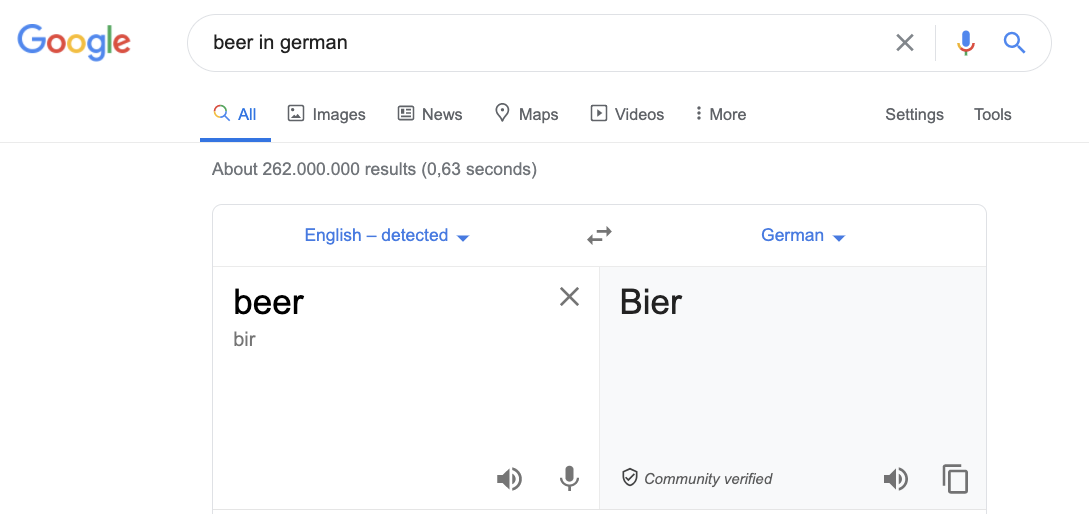I recently finished a course on machine learning (ML) by the Google Cloud team. In this article I want to share some key insights from this course regarding suitable use cases for machine learning in today’s businesses.
While many businesses could profit from machine learning, it is often hard to get started due to the lack of experience about what kinds of problems can be solved with ML and which of them are low hanging fruits. Cloud providers such as Google Cloud Platform (GCP) have made it easier than ever to enter the field of machine learning and a first prototype model is often just a few clicks away. The challenge in machine learning is no longer to manually create and fine-tune a model but rather to find suitable use cases and collect data points. Here are six groups of ML use cases – you can probably apply one or more of them in your company.
1 Replacing business rules
Business rules of the form “If A then B” often build the foundation for automatisation in a company. For example, a business rule for Google Search might have looked like this:
“If the current user is located in New York and searches for ‘baseball’, include the latest news for the New York Yankees”
This would definitely work, but it is very cumbersome to create and maintain thousands or even millions of such rules.
With ML, it is possible to replace such heuristic rules with ML models. They can be trained by historic search data and would automatically detect that people from New York are generally more interested in the local team than in one from the west coast.
The main advantage of ML models in this case is not necessarily that they would perform better, but that they can be updated much faster when users change their search habits.
A different example involves the detection of fraudulent transactions in a banking system. The detection of such transactions is heavily based on what is “normal” for a specific customer: if they constantly wire money to Africa, a new transaction to Africa should not be flagged while the same transaction would be highly suspicious for a different customer. In this example, ML models could take into account even the most recent transaction history of a specific customer, while manually created rules could never be updated fast enough to stay relevant.
2 Automating business processes
Many business processes that require multiple manual steps by employees or customers can be targeted for improvement by ML models. In one example from the course, a business required its employees to fill out many forms to report damages to a vehicle. In such cases, image classification models can be used to provide useful defaults or even fully automate the whole process.
Another example for automating business processes is the creation of service tickets by customers. While many companies require customers to work through several steps, a much more customer-oriented solution is to simply process their free-text email or even provide a chat bot to extract the relevant pieces of information.
3 Predicting business metrics
The prediction of business metrics (such as sales, churn-rates etc) is targeted both by ML and by traditional data analysis. In traditional data analysis, such predictions are performed maybe four times a year and involve several manual steps. These predictions are often based on a lot of historical data and predict rough estimates for e.g. a month or even larger periods.
In contrast, ML models can be advantageous if such predictions should be performed repeatedly, e.g. each day. Since they do not involve manual work, they can be executed as often as necessary and can always be fed with the latest data to even capture short-term trends and make much more specific predictions.
4 Understanding unstructured data
While numeric data such as customer orders, user locations and factory outputs was always targeted by data analysis projects, unstructured data such as audio, video and text was not as easy to comprehend.
Nowadays, there are ML models for image recognition, sentiment analysis and even ones that interpret videos. Unstructured data is no longer considered to be off-limits but can also be integrated into analysis pipelines.
Example use cases include the automatic translation of customer reviews, interpreting the results of video surveillance and face recognition models.
5 Personalising applications
Today, customers are used to personalised content. Instead of general financial advice on the status of the economy, they want recommendations based on their current life situation. Instead of the “most popular items”, they want to be presented with items that they might purchase based on their historic sales data.
Adding value by personalisation can be a highly lucrative business because you change your focus from offering the perfect product for everybody to offering the product that is perfect for a particular group of customers.
Recommendation engines (such as the “Next to watch” feature on Youtube or Netflix) have advantages for both sides: they keep the user engaged on the platform while simultaneously helping them find new and interesting content.
6 Improving user experiences
The last use case group is the improvement of user experiences. The Google search platform is a great example: the user interface changes based on the search query entered by the user. If the ML model detects that the user wants to translate something (e.g. “beer in German”), it shows a translation panel:

While more subtle, such UX changes may keep your users engaged with the platform.
Conclusion
In this article, I have listed some of the areas where businesses can profit from ML. Finding and evaluation use cases is just the first of many steps in a successful ML transformation. If you are interested in more aspects of this interesting path, I would highly recommend taking the Machine Learning for Business Professionals course from the Google Cloud team.
Leave a Reply